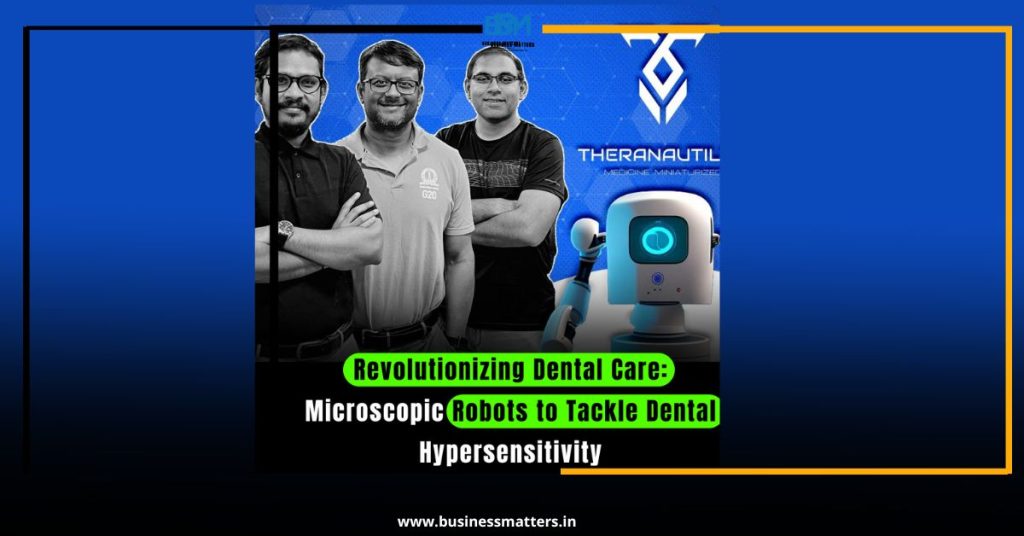Dental hypersensitivity is a widespread issue affecting a significant portion of the Indian population, with studies indicating that between 20% and 32% of Indians experience this uncomfortable condition. This problem occurs when the dentin, the sensitive part of the tooth, becomes exposed due to receding gums or enamel erosion, causing sharp pain when consuming hot, cold, sweet, or acidic foods and beverages. While current solutions primarily include desensitizing toothpastes, gels, and liquids, they may not always address the root cause of dental hypersensitivity effectively. But what if the future of dental care involved microscopic robots that could provide precise, personalized treatment directly to the source of the problem?
The Problem with Current Treatments
Traditional treatments for dental hypersensitivity, such as desensitizing toothpastes and gels, work by temporarily blocking the exposed tubules in the dentin, which are responsible for the pain. These solutions may provide short-term relief, but they do not eliminate the underlying issue or promote long-term healing. Additionally, many of these treatments are limited in their ability to address the root causes of hypersensitivity, such as gum recession or enamel erosion.
For patients experiencing severe or persistent hypersensitivity, these conventional remedies may fall short, and the need for more effective, innovative solutions becomes apparent.
Read Also :- Vanguard Group Acquires Stake in CarTrade: A Significant Move in the Indian Auto- classifieds Sector
The Promise of Microscopic Robots in Dental Care
Enter the concept of microscopic robots, tiny, sophisticated machines capable of delivering targeted, effective treatments directly to the source of dental hypersensitivity. These robots are engineered to be much smaller than a human hair, allowing them to navigate the intricate spaces inside a patient’s mouth with precision. Their primary function would be to deliver customized treatments that directly address the underlying causes of hypersensitivity.
One potential application of these microscopic robots could be in sealing the exposed dentin tubules. The robots could carry specialized substances or materials that coat the sensitive areas of the teeth, effectively protecting the nerve endings from external stimuli, thus providing long-lasting relief from pain. These robots could also work to regenerate enamel or stimulate the regrowth of gum tissue in areas affected by recession, offering a more permanent solution than temporary fixes.
How Microscopic Robots Could Transform Dental Treatment
The key advantage of microscopic robots in dental hypersensitivity treatment lies in their ability to provide highly targeted therapy. Unlike traditional methods that apply treatments broadly, these robots can go directly to the site of discomfort and deliver precisely what is needed. Some potential benefits of using microscopic robots for dental hypersensitivity include:
- Precision: The robots can target the specific areas of sensitivity, ensuring that only the affected regions receive treatment.
- Long-term Solutions: Instead of temporary relief, these robots may be able to provide lasting solutions by promoting the regeneration of enamel or gum tissue, addressing the root causes of hypersensitivity.
- Non-invasive: Using microscopic robots could provide a non-invasive alternative to current treatments that may involve painful procedures like gum grafts or enamel bonding.
- Customization: These robots can be programmed to deliver different treatments depending on the patient’s unique condition, making the treatment more personalized and effective.
The Future of Dental Care in India
With the growing prevalence of dental hypersensitivity in India and the limitations of current treatments, the introduction of microscopic robots could be a game-changer for millions of people suffering from this issue. As technology continues to advance, the possibility of integrating robotic systems into dental care becomes more tangible.
While the idea of microscopic robots might sound like something straight out of a science fiction movie, the rapid pace of innovation in nanotechnology and robotics suggests that such solutions could become a reality in the near future. Dentists and researchers are already exploring various ways to harness robotics and nanotechnology to address complex dental issues, including hypersensitivity, offering hope for more effective and lasting treatments.
Conclusion
Dental hypersensitivity remains a common and often frustrating issue for many individuals in India. While current treatments may offer temporary relief, they don’t always tackle the root cause of the problem. Microscopic robots, however, hold immense promise in revolutionizing dental care by delivering precise, targeted treatments that can effectively address both the symptoms and the causes of dental hypersensitivity. As technology continues to evolve, the future of dental care looks brighter, with more innovative solutions on the horizon to improve patient outcomes and quality of life.


